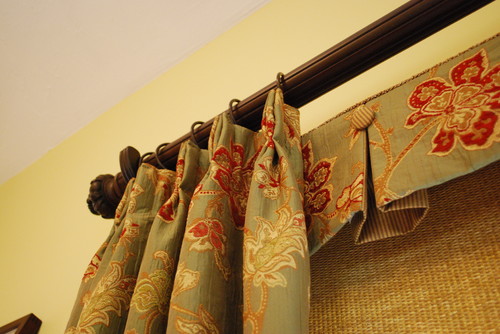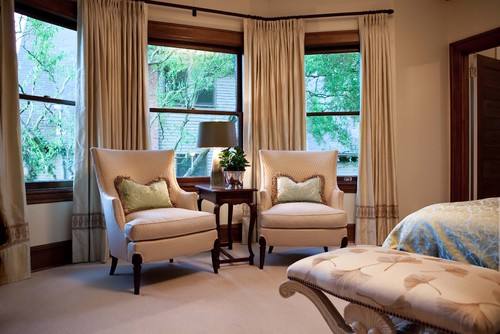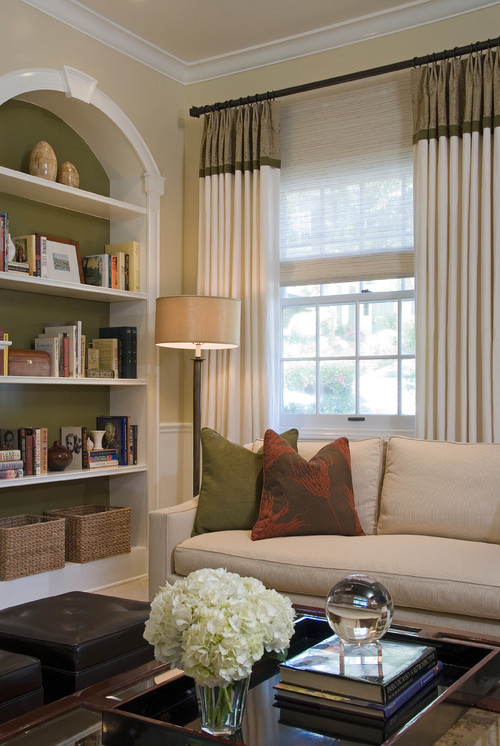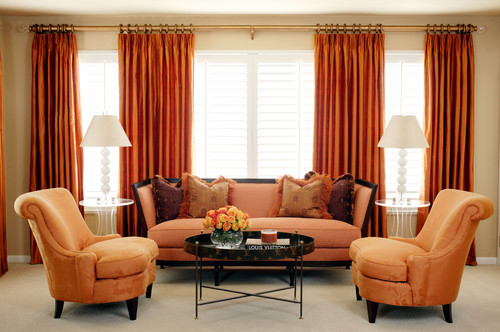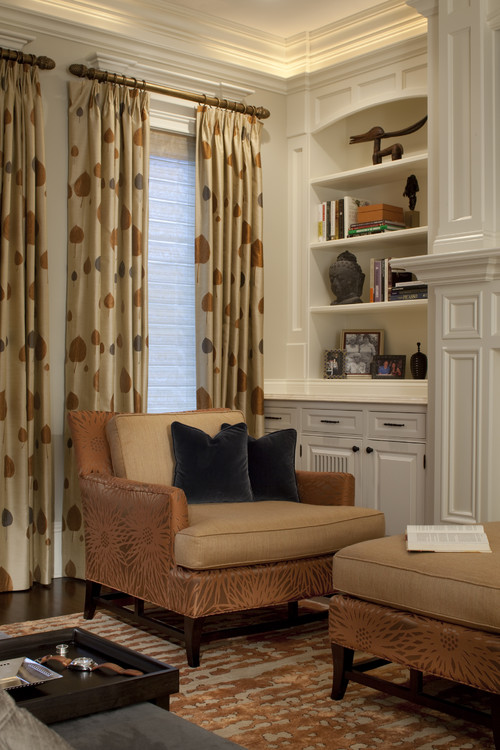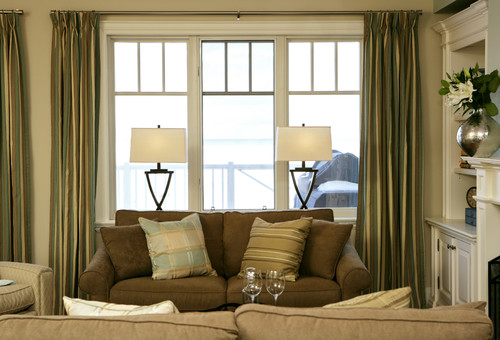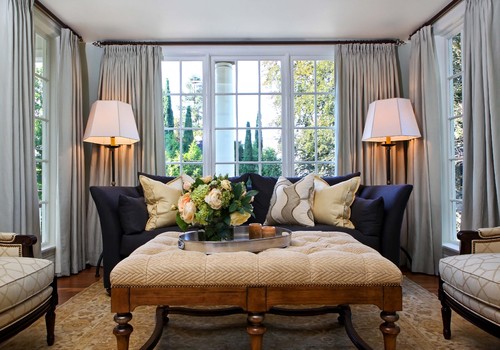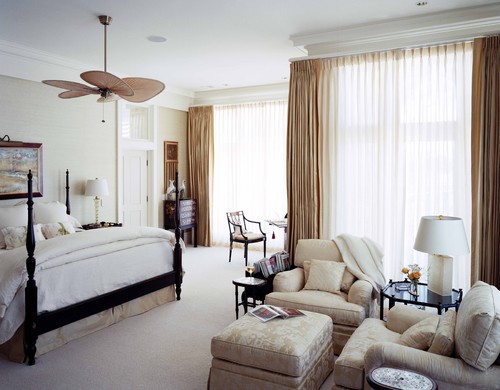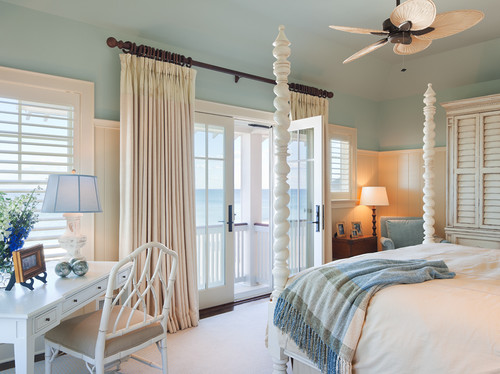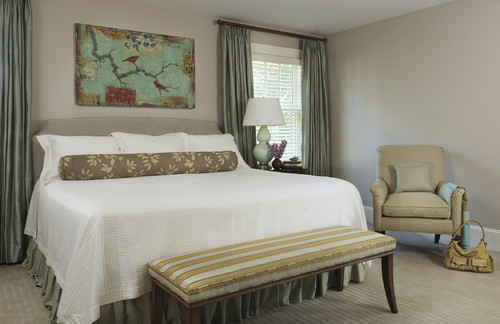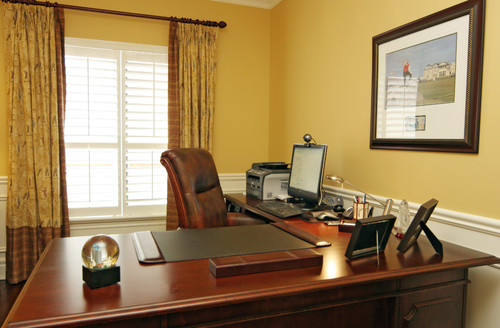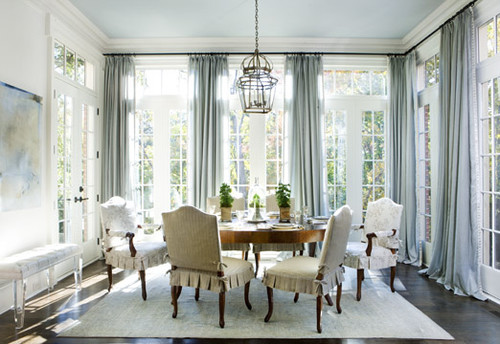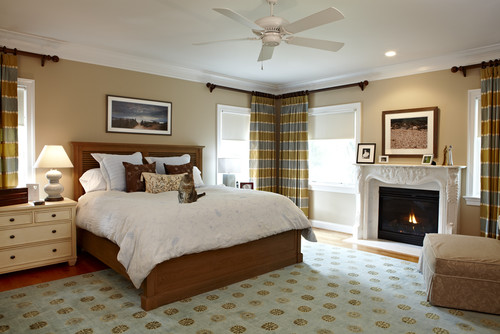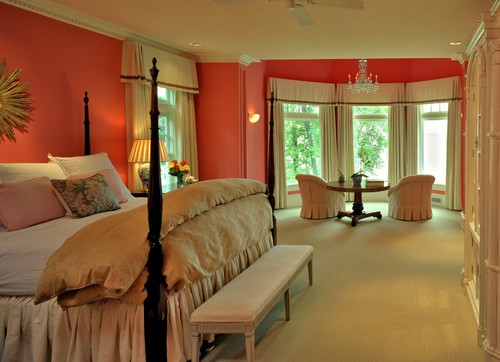Get Gorgeous Drapes with Classic Pinch Pleats
“Pinch me, I must be dreaming!” That is what I said when I had my first pinch pleated drapery installed. They looked absolutely gorgeous and perfectly tailored. Pinch pleats are a very popular way to finish off the top of drapes, and with the fall season approaching you might be thinking about adding drapes to insulate your windows and save energy.
The pinch pleat is a great addition to any traditional or elegant styled space since it offers a dramatic, yet timeless look. This type of drapery is called ‘pinched’ because the top of the drape is literally pinched together! The pinched pleats are spaced evenly apart, and weighted at the bottom of the seams. This creates a tailored look at the top, and as the fabric drops down toward the floor, the pleats control the fullness allowing the drape to fall smoothly and evenly. A pinch pleated drape is hung usually using pin hooks (zinc metal curtain hooks), that are pierced into the fabric at the top of the back of the curtain panel next to each pleat. The pins are then attached to a traverse rod or rings that hang from a decorative rod. It is a beautiful look. Here are some things to consider if you are thinking about getting pinch pleated drapes.
The pinch pleat is a great addition to any traditional or elegant styled space since it offers a dramatic, yet timeless look. This type of drapery is called ‘pinched’ because the top of the drape is literally pinched together! The pinched pleats are spaced evenly apart, and weighted at the bottom of the seams. This creates a tailored look at the top, and as the fabric drops down toward the floor, the pleats control the fullness allowing the drape to fall smoothly and evenly. A pinch pleated drape is hung usually using pin hooks (zinc metal curtain hooks), that are pierced into the fabric at the top of the back of the curtain panel next to each pleat. The pins are then attached to a traverse rod or rings that hang from a decorative rod. It is a beautiful look. Here are some things to consider if you are thinking about getting pinch pleated drapes.
Three-finger pinch pleats. This is the most popular pinch look, and the name says it all: there are three pleats. The pleats, also called fingers, are pinched together one or two inches from the top of the drape, and they open up in a flower-like fashion up toward the bottom of the drape. It creates a fuller look than the two-finger pinch pleats.
by Michelle Jamieson Interiors / New England StyleTwo-finger pinch pleats. This pinch pleat uses less fabric than other pinch pleats so it gives a more contemporary look. Two pleats are pinched together one or two inches from the top of the drape, like a V shape, that then flow down in a tailored fashion.
FYI: There are also four- and five-finger pinched pleats that look like mini fans at the top of the drape and is very full looking (you need more fabric for those styles).
by Garrison Hullinger Interior Design Inc.FYI: There are also four- and five-finger pinched pleats that look like mini fans at the top of the drape and is very full looking (you need more fabric for those styles).
The French pleat drapery. Another way to get the look is to do the pinching on the top of the fabric so the 'V' looks upside down, and the fabric flows out from there. This is technically called a French pleat (a.k.a Parisian), but it is still a pinched look. The folds are stacked tighter.
by Annette EnglishMeasuring for pinch-pleated drapes. Pinch-pleated drapes are an investment because in most cases they are made to fit your window or doorway exactly. You see, this style is not adjustable. When measuring to see how much fabric you need for a pinch-pleated drape, you need to know if your drape will be functional (opening and closing) or if will it remain stationary (used just for looks). Also think about the length of your pinch-pleated drape:
More on getting your draperies right
by Tobi Fairley- Right above the floor (positioned 1/2" off the floor for more traditional, tailored looks; best for traversing draperies)
- Breaks at the floor; best for stationary panels (a.k.a. ‘trouser’ length).
- Or add an extra 8" in length beyond the floor for a more dramatic look; best for stationary panels (a.k.a. ‘puddle’ length).
More on getting your draperies right
How to hang pinch-pleated drapes. The key to great looking pinch-pleated drapery panels is to make sure they're pinned and hung correctly.If you have them made locally, it is worth every penny to have their professional install them. The pin hooks should be pushed in right next to each pleat without pushing the pin through the front of your drapes. Often the pin hook is inserted about a quarter-inch from the top of the drape.This way it hangs well and opens and closes properly. The pinch pleat on this drape is done well and has a very elegant vibe to it.
by Michael Abrams LimitedStationary pinch-pleated drapes. Pinch pleating stationary (non-functional) drapes create soft elegance on a large window. It frames the window without taking away from the view or light coming in. These cost less than functional drapes because you don't need as much fabric.
by Jennifer BrouwerFully functional pinch-pleated drapes. Taking proper measurements is important when ordering drapes to cover your entire window (seeMeasuring For Pinch Pleated Drapes) because pinch pleated drapes are not adjustable and are really based on your window measurements. When fabric is pinch pleated it gets bulkier, so I add a few inches on either side of the window and make the rod longer for stacking up the drapes or using a hold-back or tassel.
by Garrison Hullinger Interior Design Inc. 
Pinch-pleated sheers. A sheer gives a nice, clean flowing look when you use the pinch pleating method. It is not only beautiful, but used on a traverse rod, it is functional. You can draw them from the center, to the right or to the left. Fabulous and so easy to open and close! I recommend using more widths of fabric for sheers because the fabric is so light. The extra widths will create greater fullness and make it feel luxurious.
by Frederick + Frederick Architects 
The window rod. Remember to use a heavy-duty rod or track (traverse rod) for hanging these drapes on large windows and doors because the fabric gets heavier as you add more widths of it to your rod. I love using decorative traverse rods because they look so good and make opening and closing your pinch pleated drapes. Easy!
by Richard Bubnowski Design LLCDecorative traverse rod. Traverse rods contain plastic carriers with holes to suspend pleated draperies, and the draperies are attached with pin hooks. They can be drawn open or closed using cord controls that pull them along a track. There are so many beautiful styles and finishes to choose from.
by Rachel Reider InteriorsEmbellish your pinch-pleated drape. For more interest, add a banding down the side using a solid or pattern. Or add a banding one quarter inch or so along the bottom or top of your drape. Check out the fact that these elegant drapes are in an office! Yes, pinch pleated are not just for dressy spaces. They look good anywhere.
by Jennifer BrouwerLining. Add lining to the back side of your pleated drape in a white or off-white color so the windows look unified on the outside of your home. Use insulated lining or thermal lining to keep the warmth in.
by Liz Williams InteriorsBlack-out lining. Try black-out lining to keep the light out of a space when the drapes fully cover the windows. Blackout drapes are great for bedrooms.
by Debbie Wiener 
Top treatments. Last, if you are going to use a valance or cornice over your drapes, pinch pleat the drapes and they will hang very nicely behind the top treatment.
This entry was posted on September 25th, 2011 | Posted in Vitamin V
